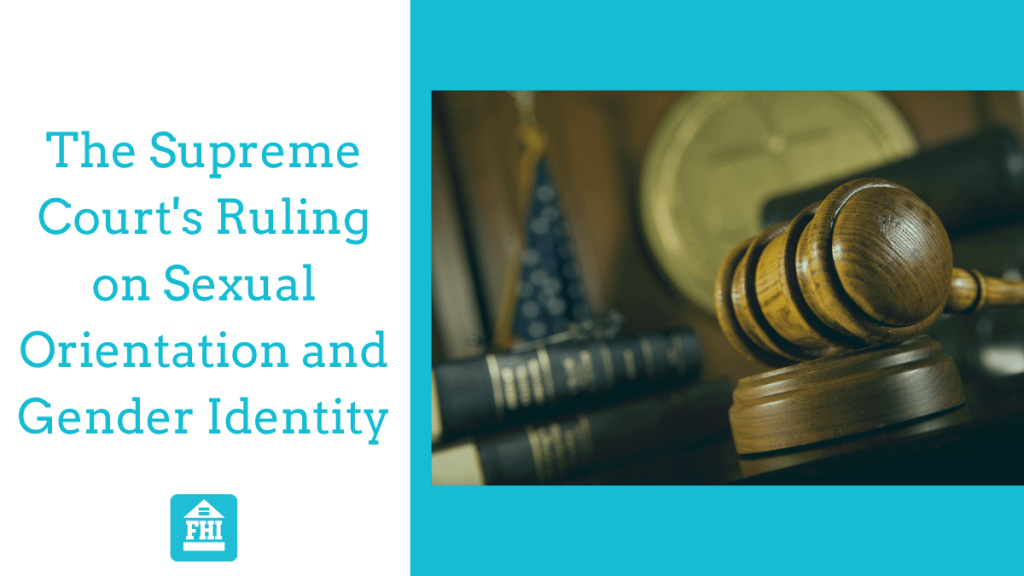
Bostock v. Clayton County
Update 02/24/2021
President Biden signed an Executive Order on January 25, 2021, requiring protections of LGBTQ people in housing, health care, and education. The Executive Order cites the recent Supreme Court decision, Bostock v. Clayton County, that held that the prohibition against sex discrimination in the Equal Employment Act prohibits discrimination on the basis of sexual orientation and gender identity. The Executive Order requires the applicable federal agencies, including HUD, to promulgate actions consistent with Bostock and the various civil rights laws. This Executive Order will result in new HUD regulations explaining the protections of LGBTQ persons under the Fair Housing Act.
We believe there will be a notable increase in testing and enforcement of the new fair housing protections of LGBTQ people. Whenever changes in regulations occur, housing providers can expect an increase in testing by housing advocacy agencies. We will provide updates on these regulations as they become available. To avoid unnecessary liability, all housing providers should be educated about these changes, and ensure that all employees are properly trained and prepared for testers. For more information on this groundbreaking case and what to expect check out our youtube video below.”
July 2020 Original Post
The Supreme Court has had a pending case involving sexual orientation and gender identity. In a very recent historic decision, Bostock v. Clayton County, Georgia, 590, U.S. ___ (2020), (“Bostock”) the U.S. Supreme Court expanded its interpretation of Title VII of the Civil Rights Act of 1964, which prohibits employment discrimination. This law prohibits discrimination on the basis of sex, but not explicitly on the basis of sexual orientation or gender identity. The Court has determined in this decision that Title VII’s protection of employees on the basis of sex also protects employees on the basis of sexual orientation and gender identity.
Employment Discrimination and Fair Housing Discrimination
Employment discrimination cases are filed and litigated at a much higher rate than housing cases, which is why courts often apply the legal analyses from employment cases to Fair Housing Act cases. This decision is so important to FHI’s Community because like Title VII, the Fair Housing Act also prohibits sex discrimination.
Therefore, we can confidently assume that courts in future FHA (Fair Housing Act) cases will also extend legal protections to individuals on the basis of sexual orientation and gender identity.
Title VII Protection for Gay and Transgender Employees
The facts of this case were not disputed and involved the termination of three employees by three different employers. Two employees were fired because they are gay. The third employee was fired because she presented as a male when hired, but later informed her employer she planned to live and work as a woman. The case reached the Supreme Court due to conflicting decisions from three Circuit Courts. The Eleventh Circuit held that Title VII does not prohibit employers from firing employees for being gay, while the Second and Sixth Circuits held that Title VII protects gay and transgender employees.
Causation Analysis
The basic premise of the Bostock decision is that an employer who fires an employee because the employee is gay or transgender violates Title VII protections because the termination is based at least in part on sex. The Court defines sex as referring only to the biological distinctions between male and female and then applies a “but for” causation analysis.
Under this analysis, the Court examines whether the outcome would have happened “but for” the sex of the employee. The Court considers the example of an employer with two employees, both of whom are attracted to men. If the employees are basically the same in all respects except one is a man and the other is a woman, and the employer fires the man because he is attracted to men, the termination is based upon a trait, attraction to males, that is permitted in female employees, but not males.
You may also like – Assistance Animals and the HUD Notice
Therefore, the Court reasons, the employee is being fired, at least in part, because of his sex. The Court applies another example for explaining how sex is a factor in cases involving gender identity in which an employer has two otherwise identical employees, both of who identify as female, and fires one because that employee identified as male at birth.
The Court reviews past Title VII decisions for its conclusion that Title VII prohibits employment actions where “changing the employee’s sex would have yielded a different choice by the employer.”
Sexual Orientation and Gender Identity Future Litigation
The Court acknowledges there may be additional issues that the Court will need to address in later cases involving religious freedom and the use of locker rooms and bathrooms. Those issues were not involved with this case and will likely rely on different legal issues instead of Title VII.
Many state and local fair housing laws and HUD’s Equal Access regulations (applicable only to HUD-insured and subsidized housing) already prohibit housing discrimination against persons due to their sexual orientation and gender identity.
However, a large portion of rental properties are not subject to these existing laws. Bostock is so significant because LGBTQ individuals will likely now be protected from housing discrimination throughout our country in all housing covered by the federal Fair Housing Act.
Summary
This case highlights the intrinsic value of ongoing Fair Housing training and education. That is why it is so important to keep your team in tune with Fair Housing current events and provide subsequent training for real-world job applications.
- Your ESA Questions Answered – Part 2
- Age – A Federally Protected Class?
- Being Nice or Compliant – Can You Be Both?
- Is it a Disability? Part 4 – Hoarding
- Unit Repairs – What Does the FHA Say About It?
